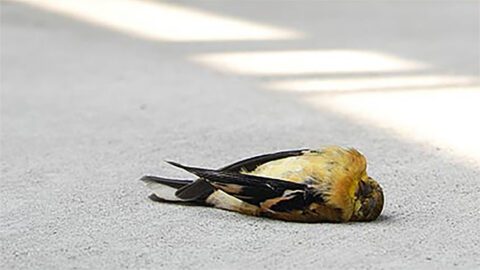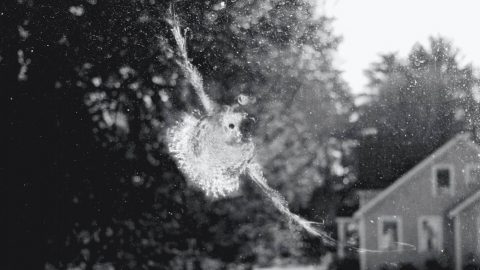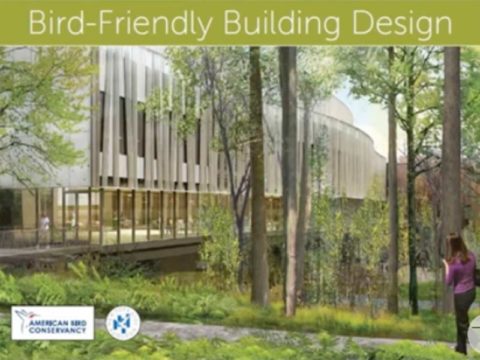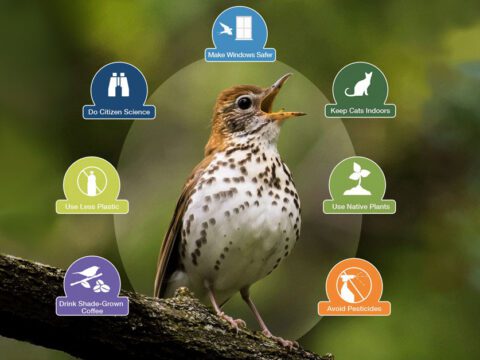Advances in Window Safety Come to the Cornell Lab and Cornell Campus
By Ellie VanHouten
September 23, 2022Every year, up to one billion birds die from window strikes in the U.S, species of all sizes brought down by the invisible tragedy of glass. A growing body of research surrounding the severity of window collisions—and ways to avoid them—has resulted in more organizations moving toward bird-friendly buildings, including the Cornell Lab of Ornithology.
Constructed in 2002, the Lab’s home in Sapsucker Woods was designed to harmonize with the landscape and allow visitors to immerse themselves in the world of birds. Its two-story structure, built with natural materials like cedar and stone, is inconspicuously set beneath the treeline of the surrounding 220-acre sanctuary. Overlooking the pond and feeder garden is a tall, glass-fronted observatory, which features an 84-foot-wide, two-story expanse of windows.
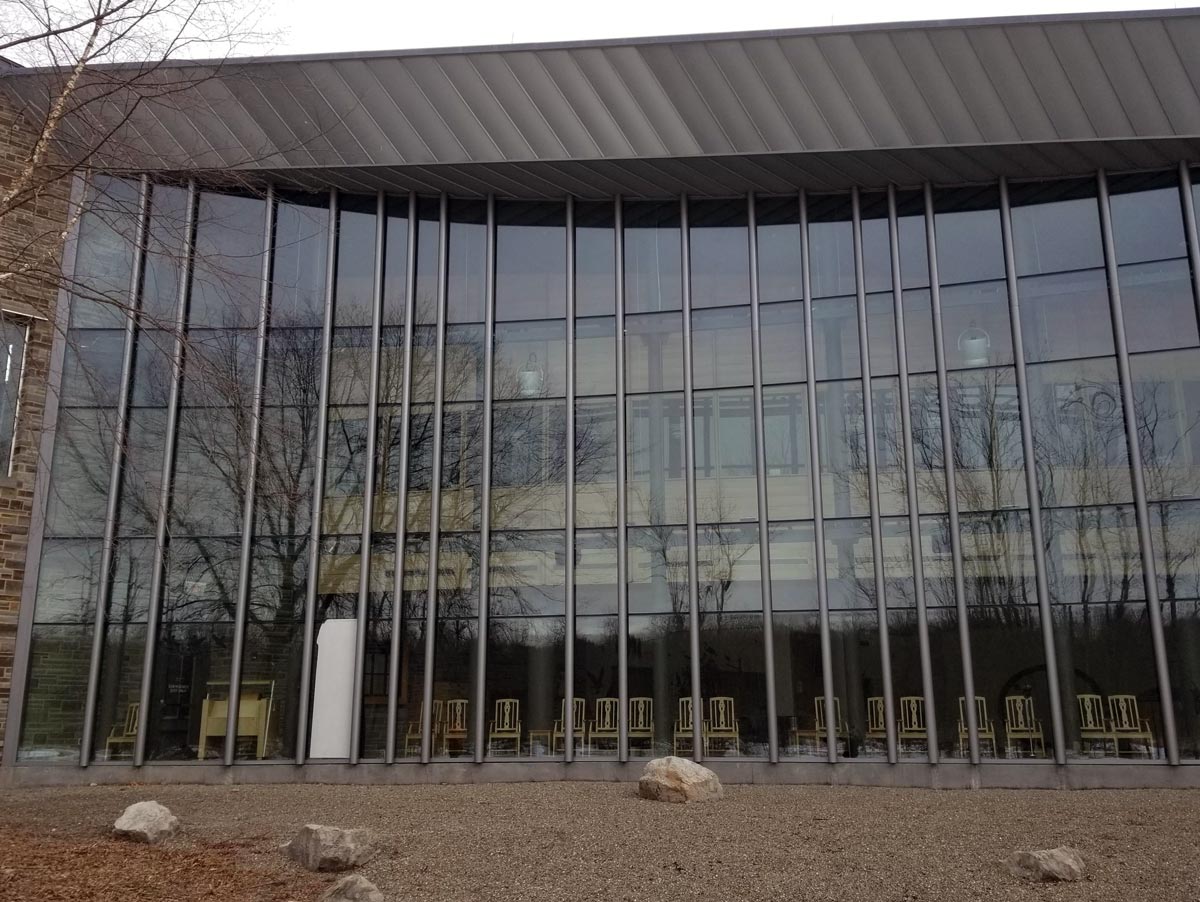
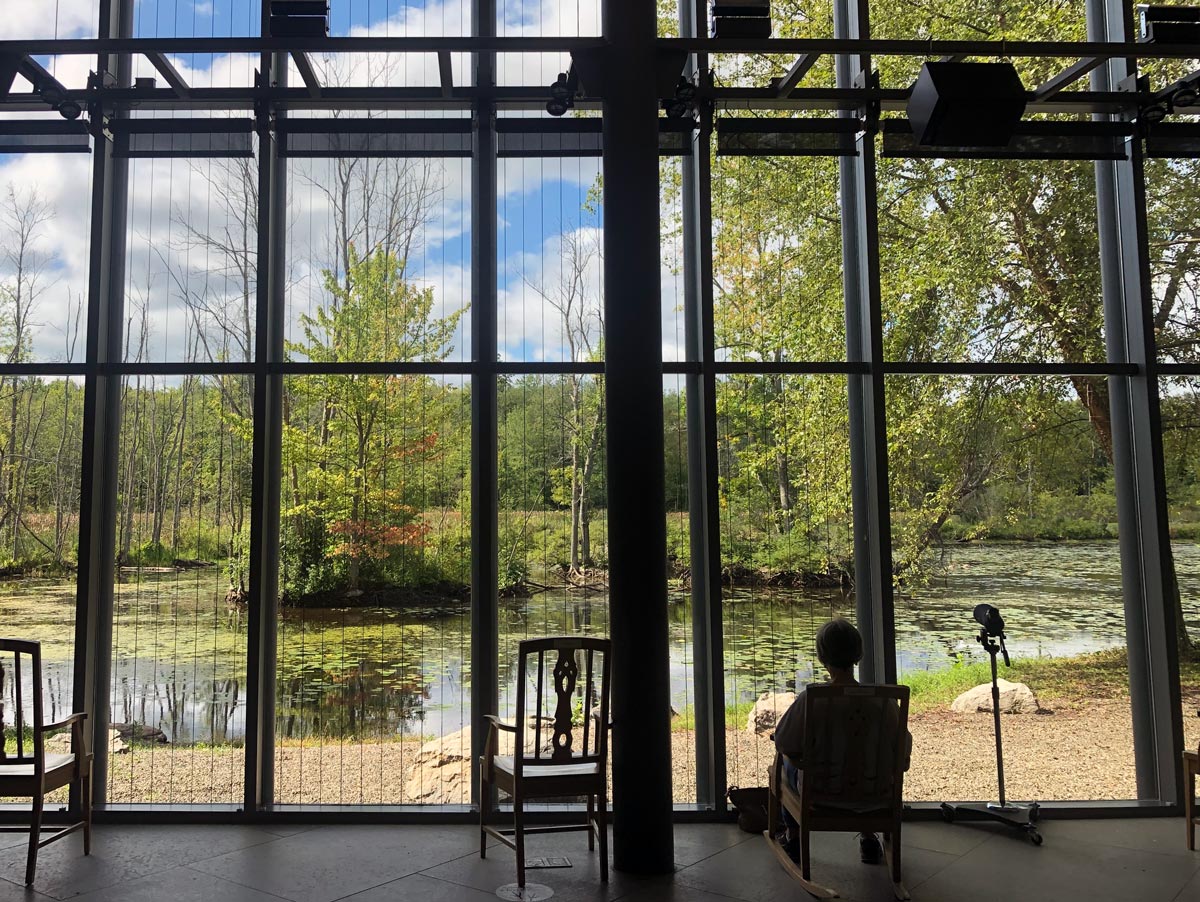
The Lab’s architects realized these large swaths of glass posed a threat to birds, but not to the extent known today: at the time of construction, there was limited research about the scale of window strikes, and proper guidance for preventing collisions had yet to emerge.
“If you look at the Lab of Ornithology from the outside, you can see that the glass is set back from metal pillars and framing, rather than being flush,” said Miyoko Chu, the Lab’s senior director of science communications. “From an architectural perspective, it was thought that birds would see the metal and change course before striking the glass. But research today shows that birds don’t use the same visual cues as humans. They don’t recognize that there is a hard surface between the metal, so they try to fly through—perhaps as if flying between the trunks and branches of trees.”
The transparency and reflectivity of glass often cause birds to perceive windows as extensions of their habitat. Entirely transparent structures such as glass bridges or breezeways allow birds to see through to trees and the sky, and the illusion of open air results in birds hurtling into the glass without realizing it’s there. Reflective windows act similarly; birds see a mirage of trees and sky that they fly toward.
Collision mitigation strategies are centered around breaking up these images of foliage. Numerous studies have shown that birds are most likely to fly into windows unless the glass is retrofitted with a 2-inch by 2-inch pattern to break up reflections (using implements such as stickers/decals and tape, among many other options) or if windows are manufactured to incorporate signals that will stop collisions. These findings explain why the Lab’s original window design has been largely ineffective in preventing strikes.
How to Make Windows Safer
“To make the Lab’s windows safer, we considered several options, evaluating factors such as aesthetics, cost, durability, and ease of installation and maintenance,” Chu said. “Ultimately, we chose Acopian BirdSavers, cords that hang in front of the windows, in large part because of their higher effectiveness rating from the American Bird Conservancy compared with film applied to the outside in patterns such as dots or stripes.”
A separate option is to hang bird netting in front of a window. This approach is even more effective and has always covered the window that overlooks the Lab’s busy feeder garden—a high-risk area in cases when startled birds may hurtle away from a feeder and towards a window.
The Lab is now working to support bird-friendly building initiatives elsewhere on Cornell University’s campus. Collaboration with partners on campus and the American Bird Conservancy’s Windows Collision program has already shown results—in late August, the university published new bird-friendly design and construction standards. These will guide new construction projects on safer structures, landscaping, and window designs. Additional plans are underway to identify and address problematic structures on campus through further monitoring and outreach.
While the enormity of the collision issue is daunting, in a different light it’s a tremendous opportunity to make changes to our buildings and help keep those one billion birds alive and flying. To do so will require initiatives across universities and cities—as well as efforts at the individual level to make homes more bird-friendly.
Ellie VanHouten‘s work on this story as a student editorial assistant was made possible by a Cornell Lab of Ornithology Experiential Learning Grant.

All About Birds
is a free resource
Available for everyone,
funded by donors like you
American Kestrel by Blair Dudeck / Macaulay Library
